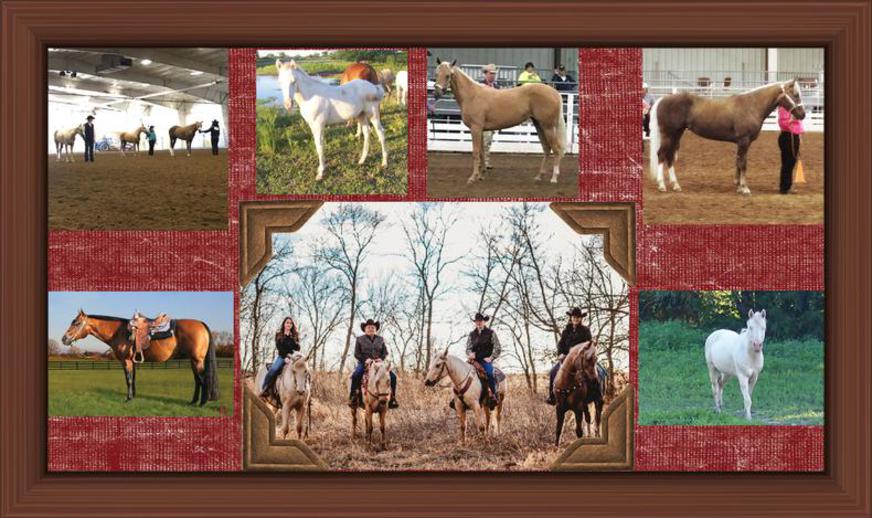Returning to the basics!!!
by Karen Tharp on 07/12/11
I don’t care how long
you’ve been around a horse, or how long you’ve trained. There will be times when you have to remind
yourself of the basics. This is what I
do when I attempt anything with one of my horses.
When attempting to
solve any horse problem always begin by
asking ‘why’. Why is this problem happening? Understanding the problem will
help you understand how to solve it.
Why does my horse not
want to be caught?
Is it because every time you catch your horse it means he has to go to work?
Does he know he is going to be separated from his pasture buddies and would
rather stay with them? Does he have a wound that needs taking care of and when
you catch him, he knows discomfort will follow?
Why does my horse
buck when I ride? Is it because the saddle is pinching or the girth is too
tight? Are you heavy and unbalanced in the saddle? Has he learned that he can
unload his rider and go back to his stable where he doesn’t have to work?
Why does my horse
bite? Is it because the girth is done up too tight and sharply? Have you been
frequently hand-feeding treats and he thinks every hand should have a treat in
it for him?
Why won’t my horse
pick up the correct lead? Is it because you aren’t being clear with your cues?
Some problems are
caused by health or physiological issues. Most horse problems are caused by
people. So when you have problems with your horse ask yourself honestly how you
might be causing it. Understanding why a problem may be occurring allows you to
change your behavior so that you can better influence your horses. The first
question to ask is not how I solve this problem, but why is this happening.
A couple Things That Never Work
Getting angry or
frustrated will only make your problems worse. Anger has no place in horse
training or handling. Yelling, hitting or kicking will only teach your horse to
fear you. Your horse won’t stop faster because you shout whoa! You won’t catch
a cagey horse by stomping up to it in anger.
If you feel yourself
becoming angry or frustrated find a way to end the session with your horse on a
good note and take a break. Frustration sometimes sets in because we are
unclear about how to solve a problem or what we are doing doesn’t seem to be
working. That’s when it’s time to ask for some help from an experienced training or
coach.
‘Horse Time’ is not ‘People Time’
Horse training or
retraining is not a lock-step procedure. Horses learn at different rates and
some may catch on quickly, while some take much longer. Don’t set a deadline.
Horses are very
sensitive to body language and mood. If you are in a rush, your horse will feel
he must rush too. But he won’t know why you are rushing. You might be rushing
because your favorite TV show is about to come on. But he might read your sense
of urgency as impending danger and his behavior will reflect that.
If you have only 15
minutes to work with your horse do something you know will lead to success in
15 minutes. In the case of teaching your horse to be caught that means you may
only go out and walk around and check the fences, hay feeder and water trough
so you can be a non-threatening presence in your horse’s pasture. Don’t use those
15 minutes to try to catch a hard to catch horse as you might end up spending
those minutes re-enforcing that he can out-run you.
If your horse is hard
to lead spend 15 minutes walking and halting. Don’t ask for anything more. If
you have only 30 minutes to ride choose an exercise you can do in only 30
minutes. Save the bigger lessons for when your time is more flexible.
Know How to Plan
Before you begin plan
what you are going to do with your horse. Have all the equipment you’ll need
handy. Plan your time so you can work uninterrupted. You will have a difficult
time teaching if you give your horse only part of your attention. You’ll
confuse him if you try to teach him while telling the dog to go lie down,
talking to another person or running off to fetch a piece of equipment.
Know To Be Satisfied with Small Successes
If your horse moves
away when you get on, feel successful if you can make him stand quietly saddled
while you stand beside him. If your horse doesn’t like the sound of clippers
praise him if he can stand quietly when the clippers run five feet away from
him if this is all he can tolerate right now. Don’t try and solve the whole
problem the first time out. Only by re-enforcing good behavior will you
eventually replace the unwanted behavior.
I hope this
helps! Remember if you’re having a
problem leave a comment and I’ll see if I can help you out!










